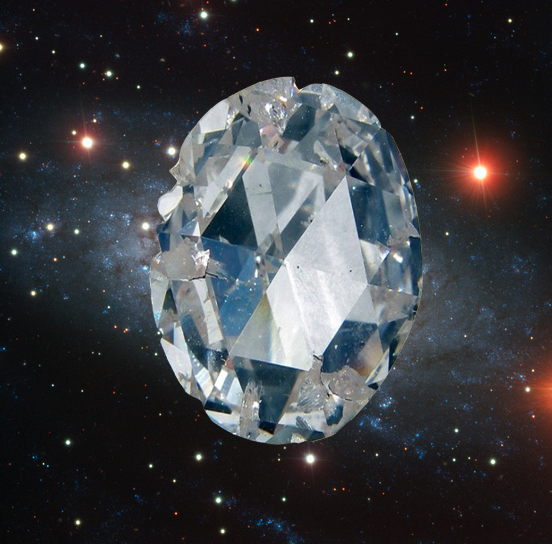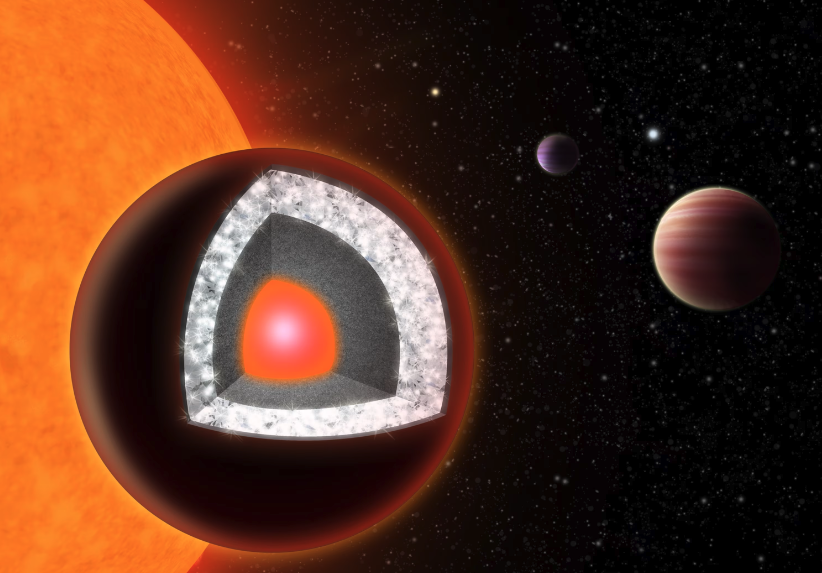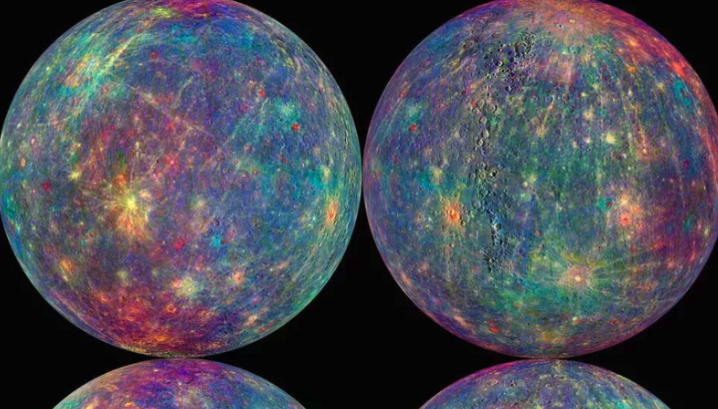Diamond Planet: The Jewelry of the Sky
In the vast expanse of the universe, celestial bodies of extraordinary nature continue to captivate our imagination. Among them, diamond planets stand out as some of the most intriguing and mesmerizing discoveries. These rare worlds, composed mostly of carbon, have the potential to host stunning landscapes adorned with sparkling diamond formations. In this article, we will delve into the fascinating realm of diamond planets, exploring their formation, composition, and the scientific wonders they hold.

Formation and Composition
Diamond planets are believed to form in dense star systems, known as pulsar systems or millisecond pulsars, where a pulsar—a highly magnetized, rotating neutron star—spirals inward towards a white dwarf star. The intense gravitational forces generated during this process can tear apart the pulsar, creating a disk of debris composed primarily of carbon. Over time, these carbon-rich disks cool and solidify, eventually forming rocky bodies with a diamond-like composition.
The diamond planets are thought to consist of crystalline carbon structures, similar to those found in Earth’s diamonds. However, unlike diamonds on our planet, which are formed under immense pressure deep within the Earth’s mantle, the diamonds on these celestial bodies are likely to be much larger and more abundant, potentially covering their entire surfaces.

Properties and Geological Marvels
The unique properties of diamond planets offer a glimpse into a world of incredible geological marvels. The surfaces of these planets, shimmering with the brilliance of countless diamonds, would reflect and refract light in unimaginable ways. The high refractive index of diamonds could create dazzling rainbows and prismatic displays, transforming the planetary landscape into a breathtaking spectacle.
Furthermore, the extreme hardness of diamonds would result in rocky terrain that is virtually indestructible. Mountains, valleys, and canyons on these celestial bodies would be adorned with diamond cliffs and peaks, presenting a majestic and otherworldly sight. The dynamic interplay of light and the crystal structures would create a visual experience unlike anything witnessed on Earth.
Exploration and Implications
Although diamond planets exist in the realm of scientific speculation, their discovery would have profound implications for our understanding of planetary formation and the potential for life elsewhere in the universe. These exotic worlds could provide valuable insights into the conditions necessary for the formation of complex carbon-based molecules, a fundamental building block of life.
While the concept of diamond planets is still largely theoretical, advancements in astronomical research and technology continue to push the boundaries of our knowledge. Future missions and observatories, such as the James Webb Space Telescope, may provide the means to detect and study these extraordinary celestial bodies, unraveling the mysteries of their origin and nature.

Conclusion
Diamond planets, with their dazzling landscapes and enigmatic compositions, serve as a reminder of the infinite wonders that await discovery beyond our home planet. As scientists continue to explore the cosmos, these captivating celestial bodies provide a tantalizing glimpse into the extraordinary diversity and complexity of the universe.
